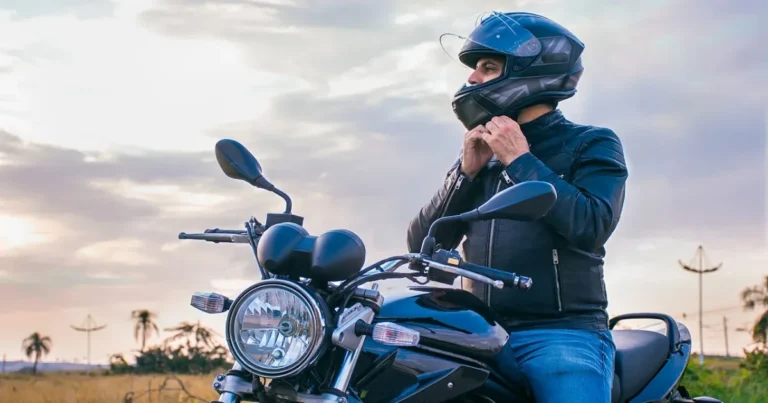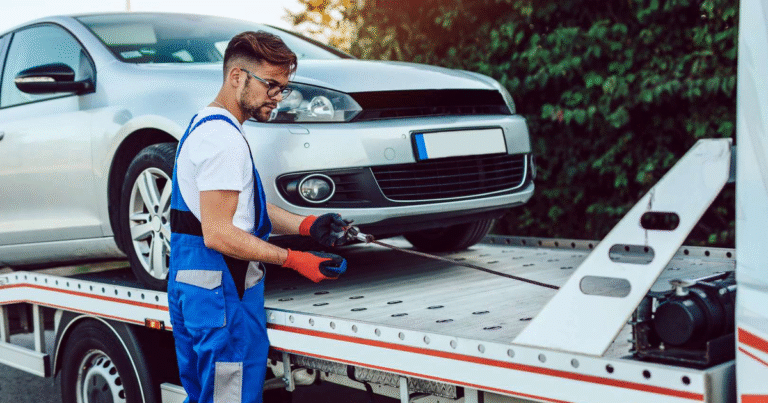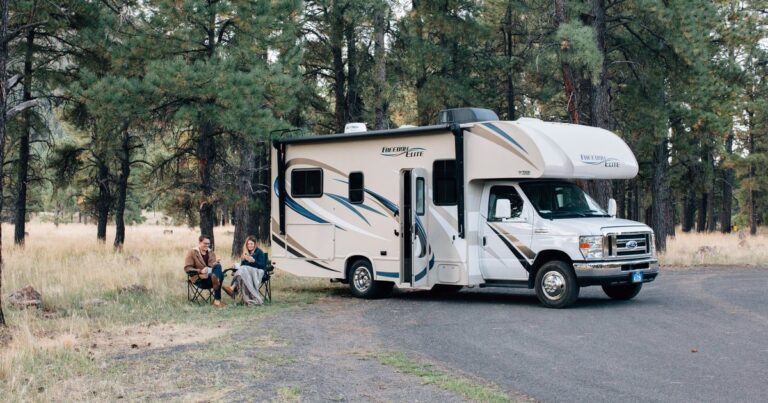ATV and Off-Road Vehicle Insurance: Your Complete Guide to Coverage and Protection
All-terrain vehicles (ATVs) and other off-road machines are built for adventure. Whether you’re tearing through muddy trails, climbing rocky hills, or exploring backwoods paths, riding off-road delivers a thrill you just can’t get on the pavement. But here’s the thing: off-road riding comes with its own set of risks.
Accidents, rollovers, collisions, and theft happen more often than most riders think. Without ATV insurance or off-road vehicle insurance, you could be stuck paying thousands in repair bills, medical expenses, or even legal costs.
This guide will help you understand how ATV and off-road vehicle insurance works, the coverage types available, how premiums are calculated, and how to get the best possible protection for your money.
What is ATV and Off-Road Vehicle Insurance, and Why Do You Need It?
ATV and off-road vehicle insurance is a financial safety net. It’s a policy you purchase from an insurance company that helps cover the costs of accidents, injuries, and damage involving your ATV, UTV, dirt bike, dune buggy, or other recreational off-road vehicle.
While not every state legally requires ATV insurance for private land use, many require it if you ride on public trails, in state parks, or anywhere your vehicle could interact with other riders. Even if it’s not mandatory in your area, it’s still a smart investment.
Why ATV and off-road insurance are essential:
-
Protects Against Financial Loss – Repairs after a crash or replacing a stolen ATV can cost thousands. Insurance covers these costs so you don’t have to.
-
Covers Medical Expenses – ATV accidents can lead to serious injuries. The right policy can help with hospital bills, surgery, and rehabilitation.
-
Legal Requirement in Some Areas – Certain public lands and trails require proof of insurance before you ride.
-
Peace of Mind – Knowing you’re covered means you can enjoy the ride without worrying about every “what if.”
Example: Imagine you’re riding on a public trail and accidentally collide with another ATV. Both machines are damaged, and the other rider is injured. Without ATV insurance, you could be held personally responsible for repair costs and medical bills. With proper coverage, your insurer steps in to handle the financial side.
Types of ATV and Off-Road Vehicle Insurance Coverage
Just like motorcycles or cars, ATV and off-road insurance policies can be tailored to your needs. The right combination of coverage will depend on your riding habits, where you ride, and how much risk you’re comfortable taking.
-
Liability Coverage
Pays for injuries or property damage you cause to others. This is the basic coverage often required for riding on public trails or in certain states. -
Collision Coverage
Covers repair or replacement costs for your ATV if it’s damaged in a crash—whether you hit another rider, a tree, or flip over. -
Comprehensive Coverage
Protects against theft, vandalism, fire, flood, or damage from falling objects. Essential if you store your ATV in an area prone to theft or severe weather. -
Uninsured/Underinsured Motorist Coverage
If another rider hits you and doesn’t have insurance or doesn’t have enough to cover your expenses, this coverage fills the gap. -
Medical Payments Coverage
Helps pay for medical bills for you and your passengers, regardless of fault. -
Accessories and Equipment Coverage
If you’ve added custom parts, winches, lights, racks, or upgraded tires, this coverage protects those investments.
How ATV and Off-Road Vehicle Insurance Premiums are Calculated
The cost of ATV insurance isn’t one-size-fits-all. Insurers look at several factors to set your premium:
-
Type of Vehicle – High-powered sports ATVs and UTVs often cost more to insure than smaller recreational models.
-
Rider Age and Experience – Younger or inexperienced riders are statistically more likely to crash and therefore pay higher rates.
-
Location – If you ride or store your ATV in an area with high accident or theft rates, premiums will be higher.
-
Usage – Frequent riders face higher premiums than occasional weekend riders.
-
Driving/Riding Record – Past accidents or traffic violations can raise your insurance cost.
-
Coverage Level – More coverage means more protection but also higher premiums.
Example: A rider with a brand-new high-performance ATV stored outdoors in an urban area will likely pay more for insurance than a rider with an older utility ATV stored in a locked rural garage.
Tips to Get Cheap ATV and Off-Road Vehicle Insurance
You don’t have to pay top dollar to get quality ATV insurance. With the right strategies, you can lower your costs while still protecting your ride.
-
Shop Around for Quotes
Different insurers can have drastically different rates. Compare at least three before deciding. -
Take an Off-Road Safety Course
Completing a certified ATV safety course can not only make you a safer rider but also qualify you for insurance discounts. -
Bundle with Other Policies
If you already have car, home, or renters insurance, bundling your ATV policy can save you money. -
Choose a Higher Deductible
Raising your deductible can lower your premium. Just make sure you can afford the deductible if you file a claim. -
Secure Your Vehicle
Keeping your ATV in a locked garage or using anti-theft devices can reduce theft risk and premiums. -
Limit Coverage to Riding Season
If you only ride in certain months, ask your insurer about seasonal or lay-up coverage.
Common Mistakes to Avoid with ATV and Off-Road Insurance
These mistakes can cost you money and leave you unprotected:
-
Only Buying Minimum Coverage – It’s cheaper upfront but can leave you paying huge bills in a serious accident.
-
Not Insuring Custom Parts – If you’ve invested in upgrades, they may not be covered unless you add accessories coverage.
-
Skipping Comprehensive Coverage – Theft and non-collision damage happen more often than riders expect.
-
Failing to Update Your Policy – If you change where you store your ATV or buy a new one, your insurance should reflect that.
Why ATV and Off-Road Vehicle Insurance is Worth It
Some riders skip insurance because they think ATVs are “just toys” or because they only ride on private land. But here’s the reality:
-
ATV accidents can cause serious injuries that lead to costly medical bills.
-
Damage from theft or fire can mean replacing your ATV entirely.
-
Liability lawsuits can happen even if you’re riding off-road.
-
Public trails and events often require proof of insurance before you can participate.
In short, ATV insurance protects your wallet, your health, and your ability to ride where and when you want.
How to File an ATV or Off-Road Vehicle Insurance Claim
If an accident or theft occurs, follow these steps:
-
Ensure Safety First – Move to a safe location and check for injuries.
-
Document the Scene – Take photos of any damage, the terrain, and any injuries.
-
Exchange Information – If another rider is involved, get their contact and insurance details.
-
Contact Your Insurer Promptly – The sooner you report it, the smoother the process.
-
Provide Supporting Documents – Include police reports, receipts for custom parts, and repair estimates if available.
Extra Ways to Protect Your ATV or Off-Road Vehicle
Insurance is the foundation, but these extra steps can reduce risks and may earn you premium discounts:
-
Use Quality Locks and Alarms – Disc locks, cable locks, and motion-activated alarms deter theft.
-
Store Indoors – Keep your ATV in a secure garage or shed.
-
Install a GPS Tracker – Makes recovery easier if your ATV is stolen.
-
Regular Maintenance – A well-maintained ATV is less likely to cause accidents due to mechanical failure.
-
Wear Protective Gear – Helmets, gloves, and body armor reduce injury severity and recovery time.
Final Thoughts on ATV and Off-Road Vehicle Insurance
Off-road riding is all about fun, challenge, and exploration. But the unpredictable nature of trails, weather, and other riders means accidents and damage are always possible.
Whether you’re looking for cheap ATV insurance, full coverage ATV insurance, or the best ATV insurance for beginners, the key is understanding your options, comparing policies, and choosing coverage that matches how and where you ride.
With the right insurance, you can focus on the adventure, knowing you’re protected every time you hit the trail.






